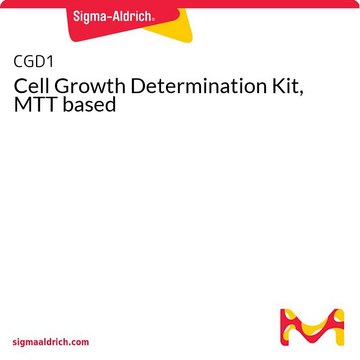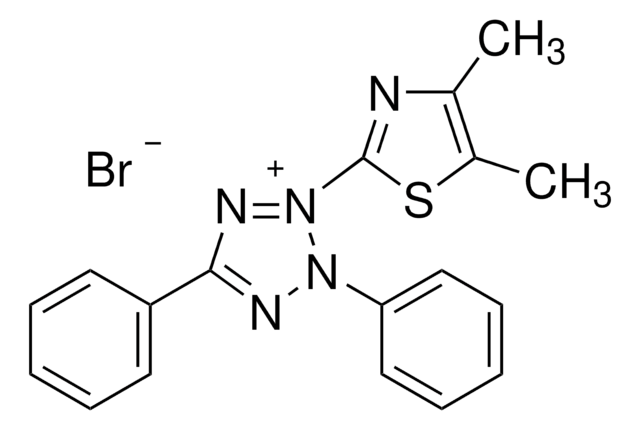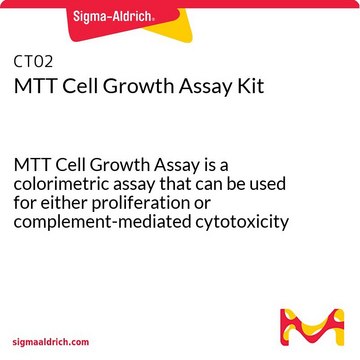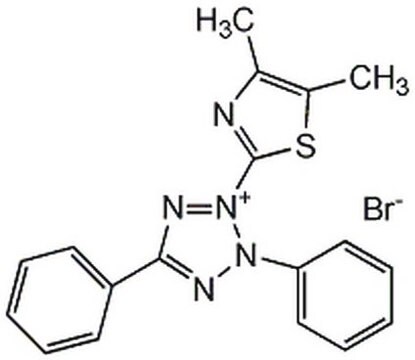Kluczowe dokumenty
TOX1
In Vitro Toxicology Assay Kit, MTT based
Synonim(y):
mitochondrial activity assay
About This Item
Polecane produkty
zastosowanie
kit sufficient for 1,000 tests
Poziom jakości
opakowanie
pkg of 1 kit
warunki przechowywania
dry at room temperature
λmaks.
570 nm
Zastosowanie
cell analysis
detection
metoda wykrywania
colorimetric
temp. przechowywania
2-8°C
Opis ogólny
Zastosowanie
Działania biochem./fizjol.
produkt powiązany
Hasło ostrzegawcze
Danger
Zwroty wskazujące rodzaj zagrożenia
Zwroty wskazujące środki ostrożności
Klasyfikacja zagrożeń
Aquatic Acute 1 - Aquatic Chronic 2 - Eye Dam. 1 - Flam. Liq. 2 - Muta. 2 - Skin Corr. 1 - STOT SE 3
Organy docelowe
Central nervous system, Respiratory system
Kod klasy składowania
3 - Flammable liquids
Temperatura zapłonu (°F)
53.6 °F
Temperatura zapłonu (°C)
12 °C
Wybierz jedną z najnowszych wersji:
Masz już ten produkt?
Dokumenty związane z niedawno zakupionymi produktami zostały zamieszczone w Bibliotece dokumentów.
Klienci oglądali również te produkty
Produkty
Testy komórkowe do proliferacji komórek (BrdU, MTT, WST1), żywotności komórek i eksperymentów cytotoksyczności do zastosowań w badaniach nad rakiem, neuronauką i komórkami macierzystymi.
Cell based assays for cell proliferation (BrdU, MTT, WST1), cell viability and cytotoxicity experiments for applications in cancer, neuroscience and stem cell research.
Nasz zespół naukowców ma doświadczenie we wszystkich obszarach badań, w tym w naukach przyrodniczych, materiałoznawstwie, syntezie chemicznej, chromatografii, analityce i wielu innych dziedzinach.
Skontaktuj się z zespołem ds. pomocy technicznej














